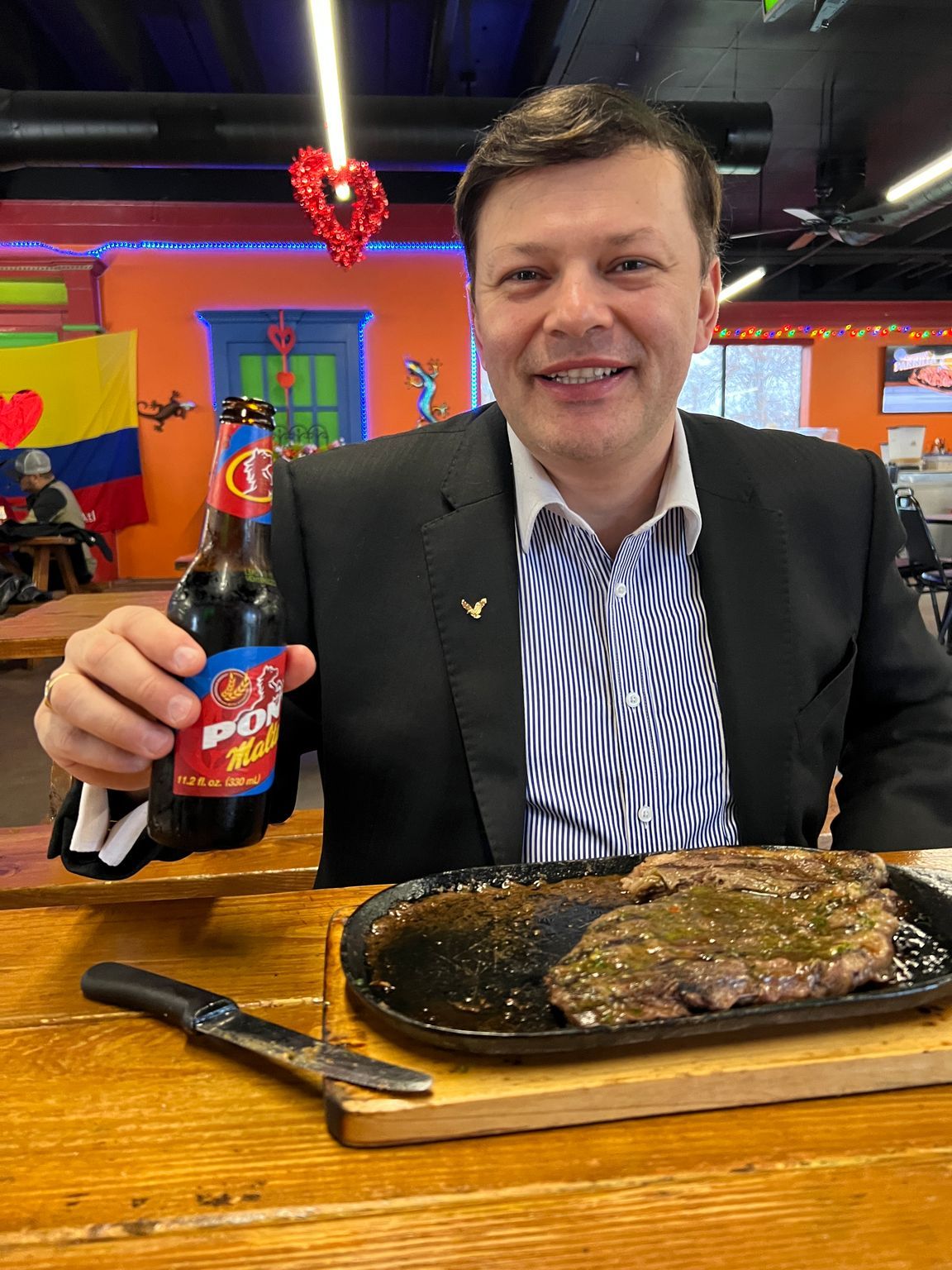Gastronomy and the Immigrant’s Journey: A Fusion of Cultures and Flavors

Today, I want to share this blog post with you, in which I am sure you will feel identified, especially if you are an immigrant like me. I have experienced firsthand the cultural mosaic that the United States offers through its diverse gastronomy. Food becomes a journey of discovery and nostalgia for an immigrant.
In an episode of my podcast “The Path of Immigrants,” I talked about this fascinating topic. Food, more than just sustenance, is a bridge between cultures, a way to remember our roots, and at the same time, to embrace new experiences.
I remember how, upon arriving in the United States, I missed typical foods from my native Colombia, such as panela water and coffee. In Colombia, tinto (black coffee with sugar) is more than a drink, it is a ritual, a part of our daily identity. Even the panela water with cheese that my grandmother used to prepare is still a sweet memory that I long for. These flavors and traditions are a piece of home that we carry in our hearts.
But the immigrant’s journey is not just about missing, it’s also about discovering. By sacrificing certain comforts and familiarities, we gain a range of culinary experiences. In the United States, the gastronomic diversity is impressive. Here, Mexican food, for example, is very prominent. From mole, a gift for the palate, to tacos, which have become a kind of Mexican empanada, each dish tells a story, reflects a region, a tradition.
However, Mexican cuisine is just the beginning. There are flavors from Puerto Rico, Cuba, El Salvador (delicious pupusas!), the Dominican Republic, Guatemala, and of course, Colombian food. Although not as widespread, dishes like bandeja paisa and ajiaco are treasures that we find in special corners of this country.
This melting pot of cultures is not limited to Latin America. Food from Spain, Ecuador, Peru, Venezuela, Nicaragua, Argentina, and Panama are also present. For example, Argentine meat and Peruvian ceviche have left an indelible mark on the American palate.

In Querétaro, Mexico, where I opened one of our offices, I noticed that Mexican food in the United States is often prepared more quickly, adapting to the pace of life in the country. This reflects how gastronomy also adapts and evolves with immigration and cultural exchange.
In addition, dishes like enchiladas, burritos, and nachos have adopted their own “Latino-North American” version. These dishes incorporate local ingredients and preparation techniques that reflect the fusion of cultures. It’s fascinating to see how each immigrant community adds its special touch to American cuisine.
Food is also a reflection of history and geography. In Mexico, for example, the maritime influence of Colima translates into unique culinary delights. Pozole varies from state to state, showing diversity within the same country.
As immigrants, we learn to adapt. Sometimes, this means learning to cook dishes from our country in a new environment, using locally available ingredients. Food in the United States tends to be convenient, but for many of us, cooking is a way to stay connected to our roots.
Concluding this exciting journey through the flavors and aromas of our lands, I want to emphasize how vital it is to keep the gastronomic diversity of our countries alive in the United States. As immigrants, we carry in our souls and palates the memories of home, those dishes that take us back to happy moments, family gatherings, and the teachings of our grandmothers in the kitchen. It is a rich, diverse, and deeply emotional legacy.

I proudly confess that my heart beats strong for Colombian food. Whenever I have the opportunity, I joyfully taste a dish from my land. It excites and satisfies me to find a piece of Colombia in the arroz con pollo, in the tinto, in a stuffed arepa, reminding me of who I am and where I come from. But beyond my love for Colombian food, I celebrate the richness of all the cuisines of Latin America and the world that we find here, in this melting pot of cultures that is the United States.
I invite each one of you to keep alive the culinary traditions of your countries. Cook those dishes that remind you of home, teach your children the recipes that have been passed down from generation to generation, share with friends and neighbors the unique flavor of your culture. By doing so, we not only preserve our identity but also enrich the cultural mosaic of this great country.
Gastronomy is a form of art, an expression of love, and a bridge between the past and the present. Through it, we nourish not only our bodies but also our souls and our communities. In every bite of our traditional dishes, there are stories, dreams, and hope.
So, whether you’re preparing a bandeja paisa for an American friend or enjoying tacos at a local festival, remember that each dish is an opportunity to celebrate our heritage and share our cultural wealth. Let’s keep cooking, eating, and sharing, keeping our roots alive and thriving in this land of opportunity. Because at the end of the day, through our food, we tell the story of who we are and what we value most.